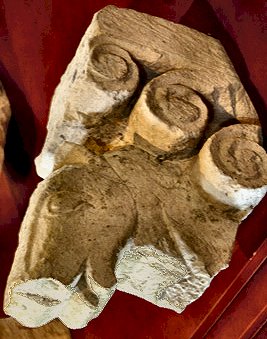CORBEL-TABLES
The figurative corbel-table is an architectural element which originated in the 11th century and consists of series of corbels supporting the cornice of a church building. The cornice itself supports the roof-beams.
The French art historian Émile Mâle demonstrated in 1911 that decorated corbel-tables originated in the Great Mosque (the Mezquita) in Córdoba (Andalucia) in the 8th century. They were subsequently adopted by Christians for their churches in northern Spain and western France at the beginning of the 11th century, and by the 12th century had rapidly spread throughout Western Europe.
Early corbel-tables were decorated with scrolls, rods or geometrical shapes. It was not until the middle of the 11th century that corbels were decorated with animate figures. This use of corbel-tables was novel, and so the most familiar motifs were brought in to perform a new illustrative function. The thornpuller is an excellent example of a Roman original being completely re-interpreted to suit the demands of doctrine and morality.
The earliest corbels were carved either on monastic foundations or on churches connected to the pilgrimage roads to Santiago de Compostela.

This carving of scrolls surmounting a horse's head
from Maillezais
(Vendée) is an early Romanesque type of figurative corbel.
Mâle considered Romanesque corbel-tables to be decorative rather
than having a function integrated with other figurative carvings, such
as those on nave-capitals and doorways. As a result of this, and perhaps
because of shock at seeing what they picturesquely and prudishly referred
to as obscenæ, French scholars have overlooked their importance.
But it is now obvious that figurative corbels were didactic: part of the Church's ethical mission, exemplifying sinful acts and behaviour, often with details of resulting damnation on the same corbel or further along the corbel-table.
